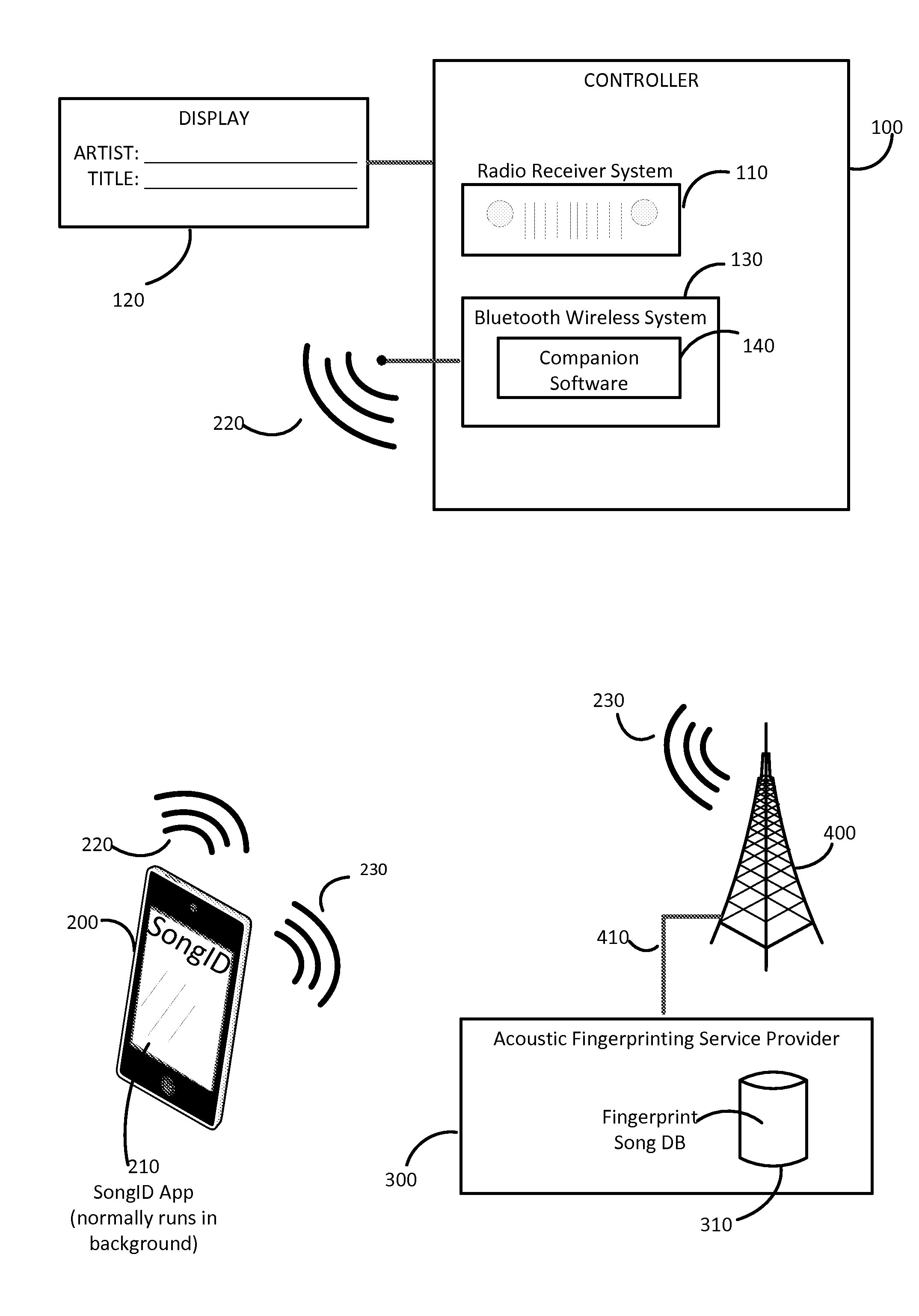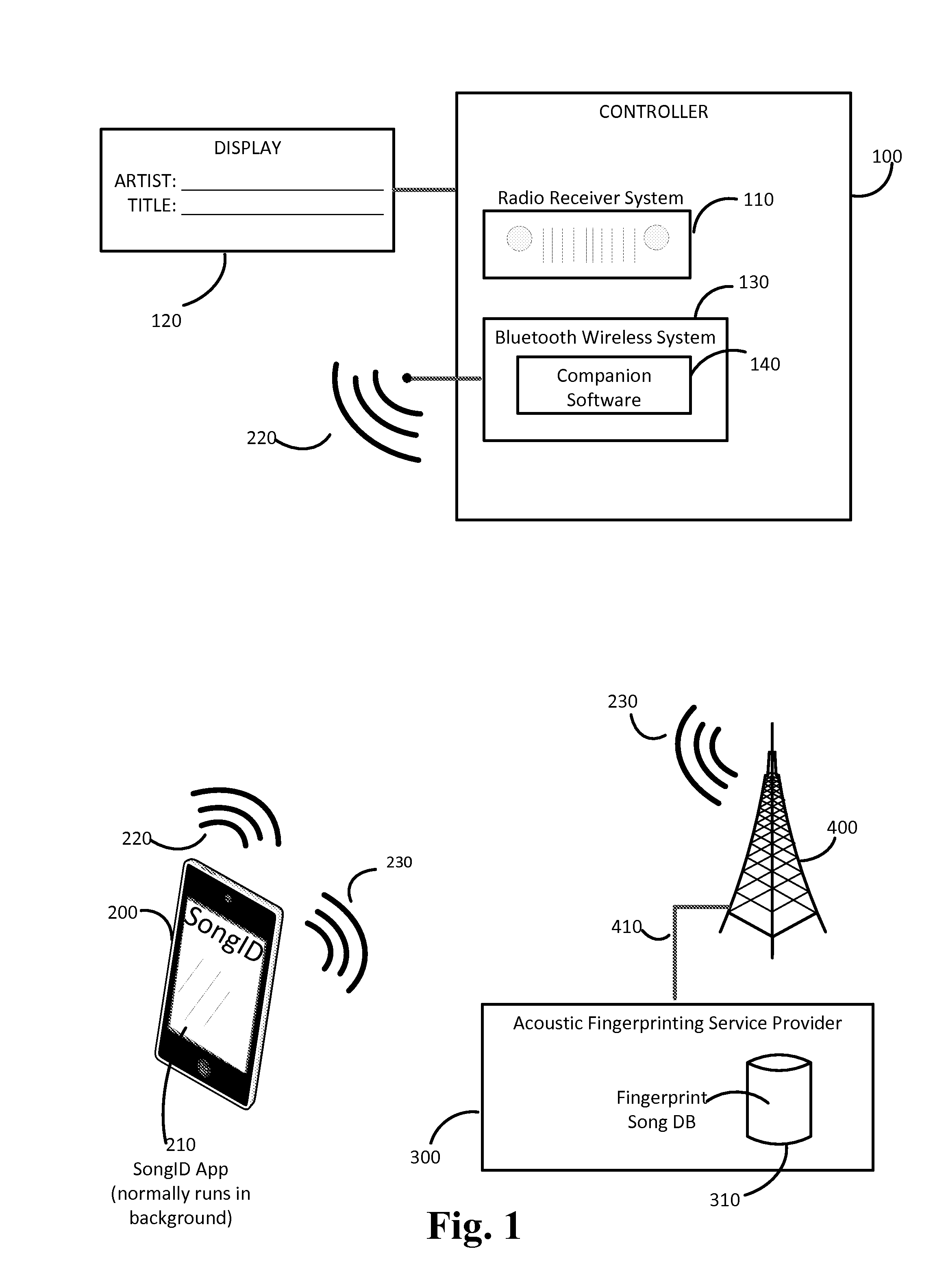Discovery of music artist and title by a radio station connection to an acoustic fingerprinting service provider
a technology of acoustic fingerprinting and a radio station connection, applied in the field of obtaining artist and title information via an acoustic recognition system, can solve the problems of splintering music consumption, large percentage of broadcast radio music listenership not being able to benefit from the availability of music metadata, and significant percentage of commercial radio simulcast on the internet not providing artist and title information for the music they play. , to achieve the effect of enhancing the operation of an acous
- Summary
- Abstract
- Description
- Claims
- Application Information
AI Technical Summary
Benefits of technology
Problems solved by technology
Method used
Image
Examples
Embodiment Construction
[0053]What follows are detailed descriptions of exemplary embodiments, but the scope of the invention is defined by the claims that follow the detailed descriptions and is not limited to the disclosed embodiments.
[0054]Digital Signal Processing, Beat Detection, and Music Detection
[0055]Modes of operation as disclosed herein may take advantage of a well-known technology, that of beat detection, identification and beat matching in systems used by DJs and radio stations to segue from one song to the next. As previously mentioned, beat matching is a well-studied mathematical science in the field of digital signal processing, and there are commonly available software modules that a programmer can incorporate into his system to build in beat identification and beat matching. The purpose of beat identification and beat matching in various embodiments as disclosed herein is to determine the presence of music and the beginning of the next song.
[0056]The mathematics of acoustic and music anal...
PUM
 Login to View More
Login to View More Abstract
Description
Claims
Application Information
 Login to View More
Login to View More - R&D Engineer
- R&D Manager
- IP Professional
- Industry Leading Data Capabilities
- Powerful AI technology
- Patent DNA Extraction
Browse by: Latest US Patents, China's latest patents, Technical Efficacy Thesaurus, Application Domain, Technology Topic, Popular Technical Reports.
© 2024 PatSnap. All rights reserved.Legal|Privacy policy|Modern Slavery Act Transparency Statement|Sitemap|About US| Contact US: help@patsnap.com










